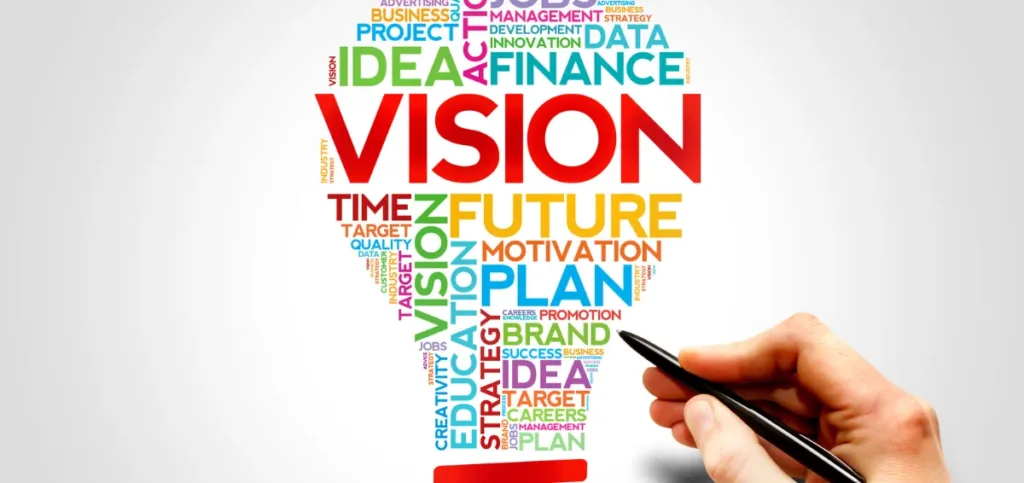
In the dynamic world of business, one thing that can help achieve long-term success is foresight. It is the ability to see into the future and anticipate trends. Foresight also helps prepare businesses to identify possible weaknesses that could impact them in the future. Thus, it forces them to better themselves to thrive in a saturated market.
Foresight thus makes organizations more resilient. However, despite its crucial role, businesses struggle to make it a part of their operations. This leads them to miss out on growth opportunities.
But why does this happen? Keep reading as we explore all the reasons behind it.
What is Foresight in Business?
Foresight, essentially, is not just a term but a process. It comprises the techniques through which businesses assess future developments to remain prepared for the challenges and opportunities that may arise. This is done with the help of qualitative methods and scenario planning. Foresight, thus, is a valuable tool that enables business owners to make more informed and smarter investments and assess potential opportunities, thereby reducing risk.
Clear foresight helps companies match their current operations with future opportunities. The underlying aim of foresight-driven strategies is to assess and consider how to make the most of possible future situations. In the unpredictable world of business, foresight strategies are a way to minimize uncertainties impacting business growth.
Must Read: Sales Closing Techniques And Strategies
What Hinders Foresight from Being Part of Business Strategies?
Foresight gives businesses a competitive edge. It future-proofs their operations, making them more able to meet the changing needs of customers. Still, it is not part of crucial business strategies. Here are all the reasons that hinder foresight from getting the traction it deserves.
Lack of Understanding About Foresight Methodologies

It might be surprising, but many businesses do not fully comprehend foresight concepts. This lack of understanding makes them confuse foresight with other concepts, such as traditional forecasting and simple trend analysis.
To truly weigh in and appreciate the benefits of foresight, it is critical to bridge this educational gap. Not only business leaders but the entire organization must be made aware of the principles and methodologies of foresight.
Tendency to Overlook the Long-Term Impact of Foresight Practices

Most companies today want instant gratification. This means desperately searching for techniques and measures that give them immediate results. This short-term focus discourages them from adopting foresight strategies, as they are based on long-term or gradual growth.
The short-term focus essentially limits organizations to narrow timeframes. It results in a perpetual review of the same business objectives with small adjustments. The focus on immediate pressure on resource distribution and daily operations diminishes the emphasis on foresight strategies.
The only way to overcome this is to redefine the strategic benefits of foresight. Only by changing the current way of assessing success and developing a more long-term and future-oriented perspective can companies truly gain the advantages of foresight.
Inability to Communicate the Value of Foresight

This challenge is tied to a lack of understanding about foresight among entrepreneurs and CEOs. When leaders themselves cannot grasp the true value proposition of foresight, how can they communicate it to their workforce?
Successful business leaders convey the impact of foresight on strategic planning, innovation, and risk management to their teams. This enables them to adequately communicate the long-term success that foresight strategies can potentially bring. Thus, everyone from top to bottom is primed to anticipate future trends and make better decisions, regardless of how small or big it is.
Perceived Challenges in Implementing Foresight Methodologies

Implementing foresight strategies isn’t easy. The process is long and involves various techniques, including environmental scanning and scenario planning. Understanding and properly utilizing these methods requires experience. It is extremely challenging for businesses without teams solely dedicated to foresight strategy building and implementation.
One way to overcome these obstacles is to start with simpler techniques, such as basic trend analysis. Over time, businesses can transition to more complex techniques. At the same time, it is also important to invest in the right tools to understand and learn the foresight methodologies and integrate them into the business.
Raed Also: Fundamentals of Marketing
How to Use Foresight to Improve Your Business?
There are several ways to use foresight in business.
Environmental Scanning

Environmental scanning involves checking your environment for emerging trends in society, tech, economy, and more. This helps in the identification of future uncertainties and opportunities. It is crucial to develop flexible strategies to navigate future developments.
Scenario Creation

Scenario creation involves thinking about possible ways your industry could evolve. The manner in which it changes can have serious implications, either good or bad, for your business. Scenario creation is best done by assessing future trends. This can be done with the help of techniques like morphological analyses and axes of uncertainty, among others.
Develop a Clear Vision

Once you have possible future scenarios, the next step is to develop a clear future vision. It should include what you want to achieve and the impact that you want your business to have. Developing a vision is closely tied to creating measurable and realistic future goals that help in its achievement. Your vision and goals will help you discover the right direction to lead your business.
Create a Strategy

Next, develop a clear strategy to achieve your vision. The strategy should include your unique value proposition, target customers, and key resources. At the same time, develop actions that will help you fulfil the goals of your strategy. These can include marketing, collaborating with industry experts, and the like. It is crucial to monitor your actions, so you know the progress your strategy is achieving.
Stakeholder Participation

You cannot fulfill your vision and goals alone. So, the next step is to engage your employees, customers, partners, suppliers, and everyone involved in your business. Here, it is critical to communicate the value of your foresight-driven strategies, vision, and goals. This will help others grasp their value, and they will thus proactively be involved in implementing the actions needed to realize your objectives.
Learn, Relearn, and Enhance Your Strategies

Implementing foresight strategies will give you a lot of experience. At various points, you will find your current actions not giving the desired results. At such times, it is important to be open to fresh perspectives. Learn from the experience and develop better strategies. Always be ready to revise your goals and strategies. Be open to feedback. All this will help you adapt your actions so they align with your future goals.
Final Words
Various factors hinder the inclusion in business activities. Understanding its true value is the first step to reaping its potential benefits. By addressing the challenges in foresight adoption and developing a clear strategy, businesses are better positioned to thrive even in the midst of future uncertainties.










